The Many Facets of Automation & Continuous Testing

Today, it is a demanding, competitive digital world with digital transformation at its peak. Businesses have increased pressure to deliver high-quality, seamless customer experiences and business performance. Every business needs to provide a seamless Customer Experience. For this, there is a need for quality assurance and testing to help enterprises constantly churn out satisfying performances and great customer experiences.
Implementing new digital transformation technologies results in new testing challenges, especially when it comes to testing customer experience. One of the most persistent challenges is receiving accurate coverage of end-user prospects and requirements in software testing. The next challenge is to have the right software testing tools for customer-driven experience testing.
UNDERSTANDING CONTINUOUS TESTING
Continuous testing is a category of software testing in which the product is evaluated early through automated tests to ensure teams receive immediate feedback to quickly mitigate as many risks as possible throughout the software development lifecycle. In traditional systems, testing software is only done after the code is written, and after bugs are found, the code is then sent back to developers to be fixed. This testing model is relatively functional but is risky, disrupted, and time-consuming. Businesses nowadays require fast delivery of high-quality products. This is where continuous testing becomes valuable. However, incorporating the system of continuous testing into any organization is not a simple procedure and requires a test strategy to ensure a smooth transition.
KEY COMPONENTS OF CONTINUOUS TESTING
Test Automation
Continuous testing cannot be done without test automation. Manual testing is time-consuming and labor-intensive. Through test automation, bugs can be fixed during the testing process. Continuous testing allows early and regular feedback, due to which changes can be made before release to the market.
Continuous Integration
Continuous Integration gathers code from developers working on one project and places it into a code repository, where they might generate bugs when integrated with different developer codes. This is where continuous testing can be applied, through automation of test executions each time there is a code integration, and bugs can be identified much before product release.
Continuous Delivery
Continuous delivery is having any code version ready to deploy to production, an integral part of continuous testing. Code is tested here before deployment and acted upon immediately.
HOW TO GO ABOUT CONTINUOUS TESTING
Continuous testing can be implemented at every stage of the continuous integration/ continuous delivery pipeline. Test suites can be set up at every point the code changes, merges, or releases. That way, tests can be run at a specific point rather than at once, helping to reduce time and effort.
BENEFITS OF CONTINUOUS TESTING
- Find as many errors as possible before releasing to production
- Eliminate silos between the development, testing, and operations teams
- Reduction in time spent testing due to automation of test cases
- Test early and often throughout the development, delivery, testing, and deployment cycles
- Parallel performance tests that are run increase testing execution speed
- Earn customer loyalty through continuous improvement and quality
- Assess potential problems beforehand and reduce business risks
- Faster release due to speedy process from delivery to production
- Immediate, quick, continuous feedback
CHALLENGES OF CONTINUOUS TESTING
- Organizations might not process the right tools and training for continuous testing.
- Maintaining only traditional testing methods and test data management that is not clearly defined hampers the full potential of continuous testing.
- Production environments should also reflect the test environment to ensure every stage is tested correctly.
- Test environments that do not work within the code repository base prevent seamless testing.
- The absence of code integration regularly can create defect issues with duplicated coding efforts and non-compatible code.
- Transparent communication lines are needed to prevent the testing pipeline from becoming siloed, creating bottlenecks.
Continuous testing is a great way to ensure that quality products that match customer expectations are released to the market with significantly fewer efforts at a better cost and time.
SLK Software has a proven track record in automating application development lifecycles across the breadth of businesses. SLK Avo Assure is highly intelligent and technology agnostic, taking application testing beyond current tools. With Avo Assure, users can automatically create and deploy test cases at no additional cost. Avo Assure enables users to achieve continuous, heterogeneous, and end-to-end testing for their business applications without requiring code.






